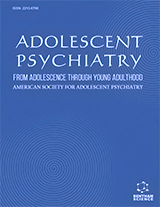Abstract
This study examined the results of nine years of follow-up of group therapy with adolescents at a clinic in Montevideo, Uruguay. “Groups of adolescent life” started in the year 2002 with regular weekly sessions lasting 60-75 minutes. Five to 14 youngsters of both sexes participated in each group; the ages were between 10-12 and 12-15 years old for some groups, and between 16 -18 and 19-21 years old for other groups.
The Photolanguage® technique was used. It consisted in the choice of a photo to answer a question asked by the therapist at the beginning of the session; this created a new ludic situation that facilitated the expression of emotions.
The main purpose of the therapeutic-groups was to promote good interpersonal relationships within each group as a way to improve further communications with peers and adults. The groups encouraged the communication of feelings, and collectively analyzed individual situations; they also sought to develop the capacity of the participants to enjoy the human encounter. The main requirement was regular attendance, and the therapists guaranteed freedom of expression and respect for all opinions in an environment of participation where the adolescents could share their experiences and emotions.
The adolescents responded favorably to the group situations, better than to individual therapeutic approaches. The groups allowed them to be more open and communicative, and to express freely their most serious conflicts. The youngsters were able to discover their personal uniqueness and commonalities, and learned to express their opinions as well as to listen, to accept, and to respect those of others. This enhanced their self-esteem and improved their day to day functioning.
Keywords: Adolescents, psychotherapy, group therapy, Photolanguage®, Uruguay
Adolescent Psychiatry
Title: The Use of Photolanguage® in Group Therapy with Adolescents: An Early Intervention in Youth Mental Health
Volume: 2 Issue: 1
Author(s): Dora Musetti de Schelotto, Irina Kohan and Claudia Guerrero
Affiliation:
Keywords: Adolescents, psychotherapy, group therapy, Photolanguage®, Uruguay
Abstract: This study examined the results of nine years of follow-up of group therapy with adolescents at a clinic in Montevideo, Uruguay. “Groups of adolescent life” started in the year 2002 with regular weekly sessions lasting 60-75 minutes. Five to 14 youngsters of both sexes participated in each group; the ages were between 10-12 and 12-15 years old for some groups, and between 16 -18 and 19-21 years old for other groups.
The Photolanguage® technique was used. It consisted in the choice of a photo to answer a question asked by the therapist at the beginning of the session; this created a new ludic situation that facilitated the expression of emotions.
The main purpose of the therapeutic-groups was to promote good interpersonal relationships within each group as a way to improve further communications with peers and adults. The groups encouraged the communication of feelings, and collectively analyzed individual situations; they also sought to develop the capacity of the participants to enjoy the human encounter. The main requirement was regular attendance, and the therapists guaranteed freedom of expression and respect for all opinions in an environment of participation where the adolescents could share their experiences and emotions.
The adolescents responded favorably to the group situations, better than to individual therapeutic approaches. The groups allowed them to be more open and communicative, and to express freely their most serious conflicts. The youngsters were able to discover their personal uniqueness and commonalities, and learned to express their opinions as well as to listen, to accept, and to respect those of others. This enhanced their self-esteem and improved their day to day functioning.
Export Options
About this article
Cite this article as:
Musetti de Schelotto Dora, Kohan Irina and Guerrero Claudia, The Use of Photolanguage® in Group Therapy with Adolescents: An Early Intervention in Youth Mental Health, Adolescent Psychiatry 2012; 2 (1) . https://dx.doi.org/10.2174/2210676611202010061
| DOI https://dx.doi.org/10.2174/2210676611202010061 |
Print ISSN 2210-6766 |
| Publisher Name Bentham Science Publisher |
Online ISSN 2210-6774 |
 19
19
- Author Guidelines
- Bentham Author Support Services (BASS)
- Graphical Abstracts
- Fabricating and Stating False Information
- Research Misconduct
- Post Publication Discussions and Corrections
- Publishing Ethics and Rectitude
- Increase Visibility of Your Article
- Archiving Policies
- Peer Review Workflow
- Order Your Article Before Print
- Promote Your Article
- Manuscript Transfer Facility
- Editorial Policies
- Allegations from Whistleblowers
- Announcements


























